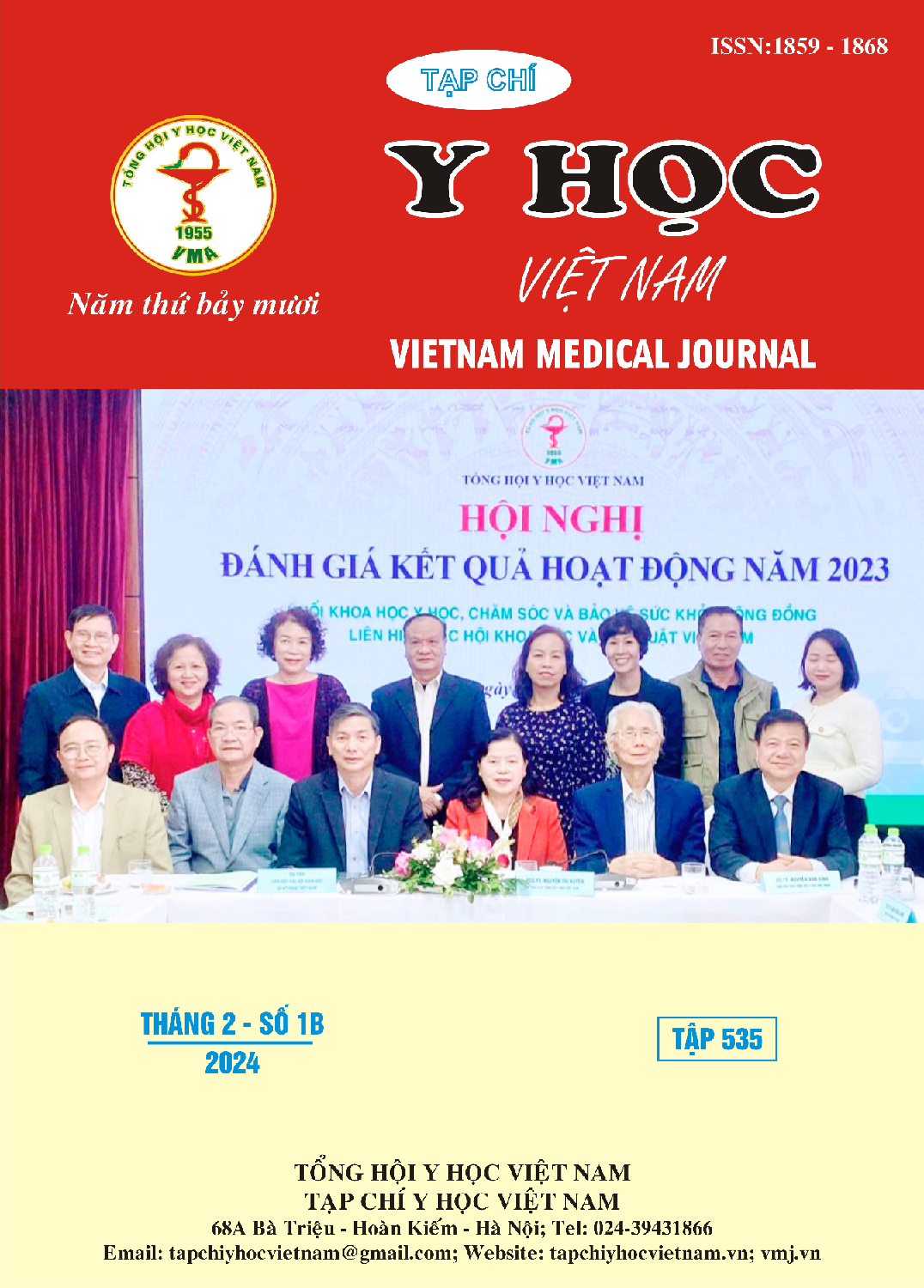THE RESULTS OF CRANIOPHARYNGIOMA RESECTION BY THE PTERION APPROACH
Main Article Content
Abstract
Objective: Evaluate the results of craniopharyngioma resection by the pterion approach. Subjects and methods: Retrospective study describing a series of patients diagnosed with craniopharyngioma, treated at the Neurosurgery Department of Cho Ray Hospital from January 2019 to June 2023, and underwent surgery by pterion craniotomy and we collected 35 cases of patients fulfilling the mentioned conditions. Results: In 35 cases of craniopharyngioma operated by the pterion craniotomy, there were 25.8% of cases had gross total resection, 51.4% of cases were able to remove ≥ 90% of the tumor or had near total resection. The common properties of craniopharyngioma were a mixed form of cystic and solid tissue and accompanied by calcification (80%). Most cases after operation were awake with GCS 14-15 points (74.3%). The complication after surgery were 6.4% of cases had epilepsy and 2.9% of cases had limb weakness. 68.6% of cases had diabetes insipidus on the first day after operation. Among them, diabetes insipidus was registered to occurr on permanent, transient and three-phase condition at the rate of 35.3%, 29.4% and 11.8%, respectively. According to pathology, it was recorded that 62.8% of cases were adamantinomatous craniopharyngiomas, 34.3% of cases were papillary craniopharyngiomas and 2.9% of cases could not be classified. In 35 cases that were operated and treated, 54.3% of cases were discharged with GOS 5, following by 37.1% of GOS 4 cases, and 5.7% of GOS 2. The mortality rate after treatment is 8.6%. The recurrence rate during follow-up and treatment was 18%. Conclusion: Craniopharyngioma surgery by pterion approach is not only effective in the surgical treatment of craniopharyngioma, but also contributes to aesthetics and is less invasive in craniopharyngeal surgery.
Article Details
Keywords
Craniopharyngioma, the pterion approach, hydrocephalus, diabetes insipidus.
References
2. Trần Minh Thông. Khảo sát đặc điểm lâm sàng – giải phẫu bệnh 127 trường hợp u sọ hầu. Tạp chí Y học TPHồ Chí Minh. 2010;14 (2-2010):374 - 379.
3. Zamora RE, Grimm F, Adib SD, Bornemann A, Honegger J. Surgical Treatment of Craniopharyngiomas in Adults: Comparison between Primary Surgery and Surgery for Recurrence. Current Medical Science. 2022; 42(6):1119-1130.
4. Karavitaki N, Brufani C, Warner J, et al. Craniopharyngiomas in children and adults: systematic analysis of 121 cases with long‐term follow‐up. Clinical endocrinology. 2005;62(4):397-409.
5. Lopez-Serna R, Gómez-Amador JL, Barges-Coll J, et al. Treatment of craniopharyngioma in adults: systematic analysis of a 25-year experience. Archives of medical research. 2012;43(5):347-355.
6. Hofmann BM, Höllig A, Strauss C, Buslei R, Buchfelder M, Fahlbusch R. Results after treatment of craniopharyngiomas: further experiences with 73 patients since 1997. Journal of neurosurgery. 2012;116(2):373-384.
7. Zhao C, Chen Z, Xu N, et al. Comparative analysis on microsurgical removal of craniopharyngioma via lateral supraorbital approach and standard pterional approach. Chinese Neurosurgical Journal. 2018;4:1-8.
8. Zacharia BE, Bruce SS, Goldstein H, Malone HR, Neugut AI, Bruce JN. Incidence, treatment and survival of patients with craniopharyngioma in the surveillance, epidemiology and end results program. Neuro-oncology. 2012;14(8):1070-1078.
9. Puget S, Garnett M, Wray A, et al. Pediatric craniopharyngiomas: classification and treatment according to the degree of hypothalamic involvement. Journal of Neurosurgery: Pediatrics. 2007;106(1):3-12.
10. Zhao X, Yi X, Wang H, Zhao H. An analysis of related factors of surgical results for patients with craniopharyngiomas. Clinical neurology and neurosurgery. 2012;114(2):149-155.


